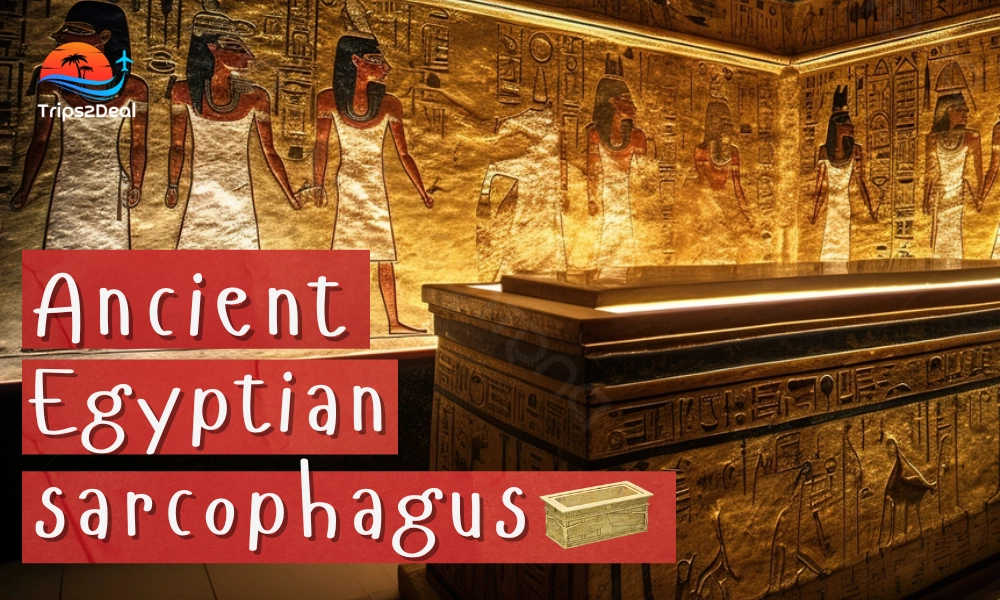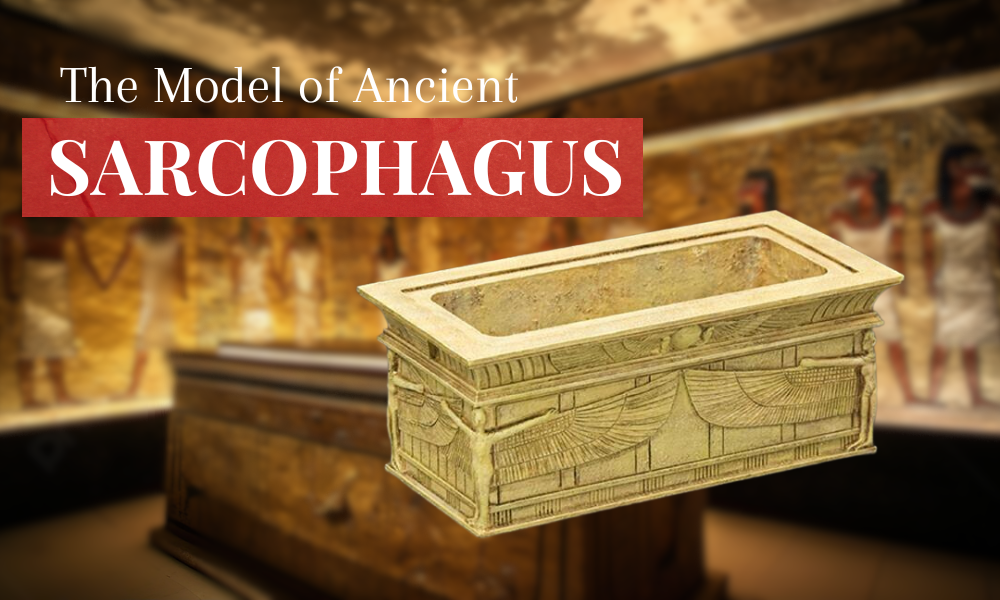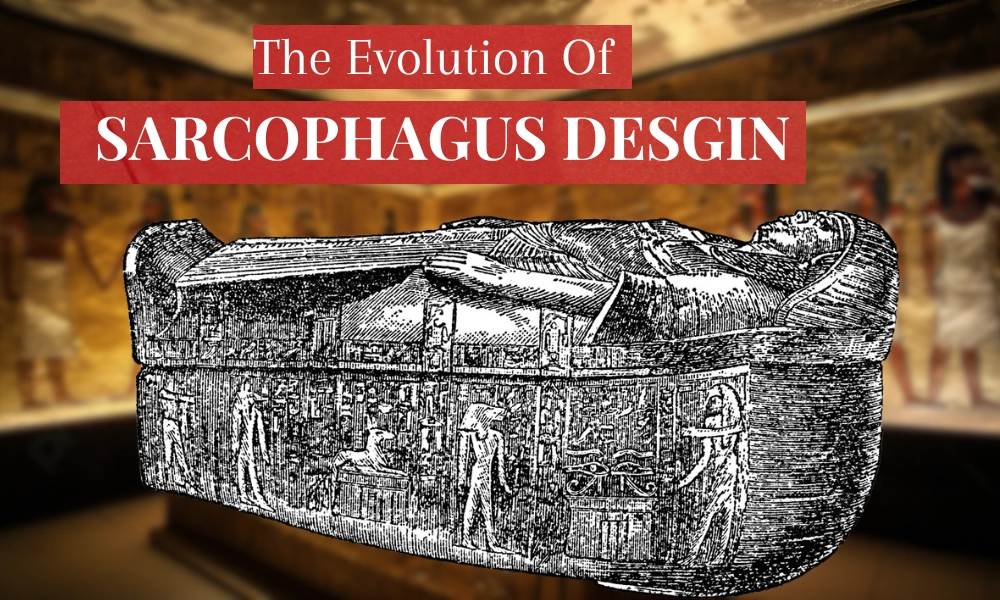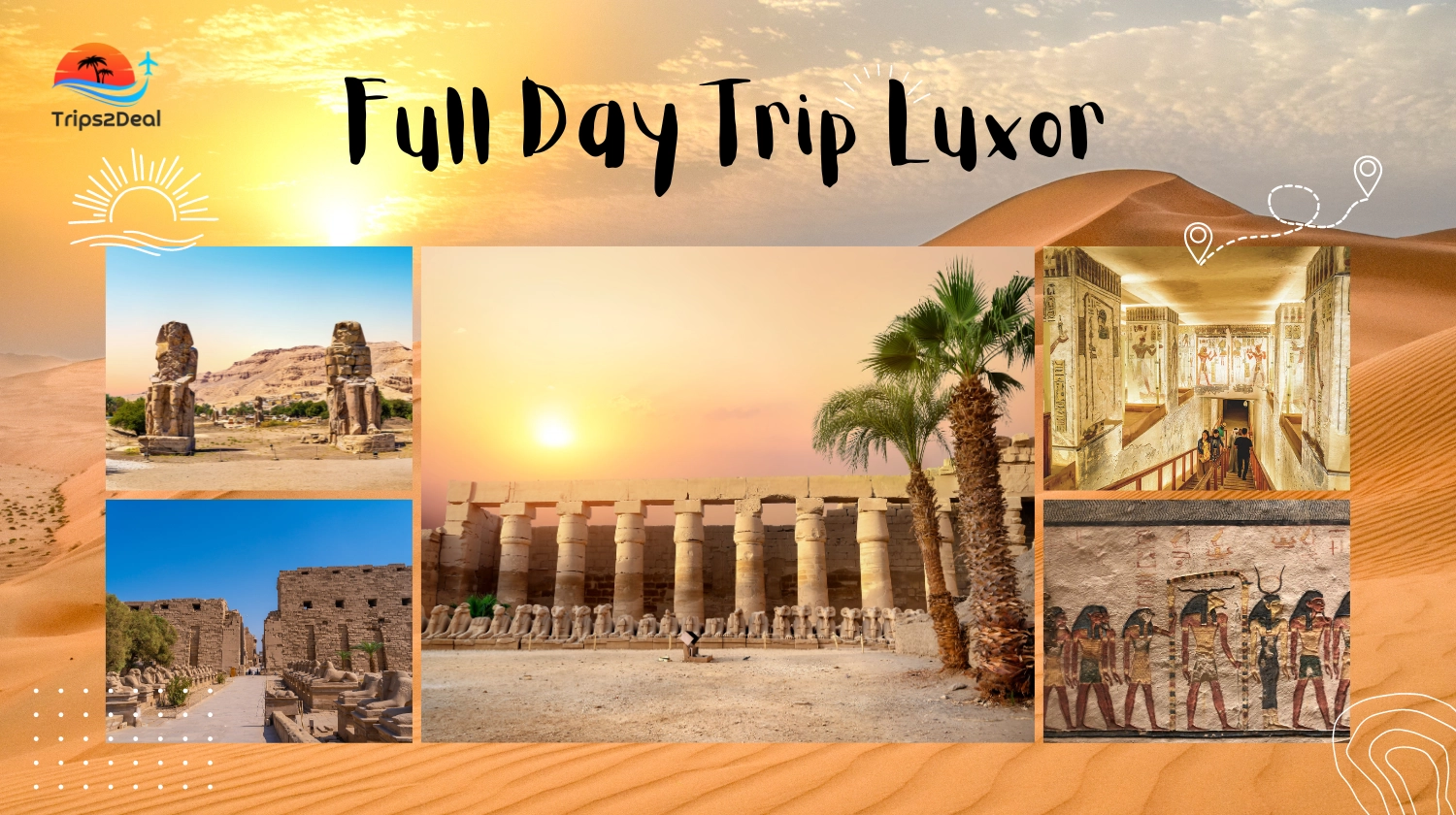Blogs

Ancient Egyptian Sarcophagus Meaning & History
In an Ancient Egyptian sarcophagus, the arrangement of the dead formed an important aspect of burial customs. Any sarcophagus was fatigued not just with the idea to shield the coffins but to embalm it for eternity and represent the persona and the convictions of the person inside the sarcophagus. The ancient Egyptians assured themselves there was life beyond the grave, hence why the coffin was important for ferrying the deceased to the land of the dead. Containers, or sarcophagi in this case, often became rich with imagery, and writing and began to serve, not only as a means to lock up a body for an eternity but also as relics of sights and spirituality of the people.
1. The History of the Egyptian Sarcophagus:
The history of the Egyptian sarcophagus covers many centuries and indicates the formation of Egyptian understanding and the practice of burial. In the Old Kingdom (c. 2686–2181 BCE), sarcophagi were structural anthropoids, which were the first stone anthropoids made in a rectangular box shape for covering a tomb corpse. With the growth of religious ideas, the sarcophagi became fancier especially during the Middle and New Kingdom (c. 2055-1069 BCE) when the scribes were able to carve sarcophagi in human shapes with a lot of religious pictures and embarking text. Hieroglyphic texts and fine carvings were later employed with the aim of securing the deceased a safe journey into the next world. In the New Kingdom, things advanced as sarcophagi reached their artistic glory as expensive metals with images designed to mean protection and everlasting life were used in the designs. These burial receptacles transformed from ordinary tombs to detailed artistic objects of the eternity quest.

2. The Evolution of Sarcophagus Designs:
The forms of sarcophagi changed greatly in the course of several millennia. At the beginning of the Old Kingdom, they used to be relatively basic, rectangular stone boxes. This time saw another shift in the design of sarcophagi which now became much more elaborate with the introduction of anthropoid facades that were designed like the deceased. This was also an indication of the increasing recognition of the individual in the Egyptian setting. The finest versions were however seen during the New Kingdom With remarkable artistic coffins gilded, jewel-encrusted, and ornately inscribed with pictures and letters. These styles became, over the years, not merely emblems of the power and influence that individuals enjoyed but also embodiments of the overseas voyage that the dead were expected to take.

3. Materials and Craftsmanship:
Sarcophagi were made of materials that were commensurate with the wealth and status of the person enshrined in it. The earliest sarcophagi would have consisted of limestone or another stone that was available near the area. With the evolution of skills, members of the privileged class have been buried in wooden coffins that have been caulked with gold or studded with jewels. There was a dramatic degree of creativity involved in the making of such vessels, which included skilled artisans sculpting and texturing images of various Egyptian gods, along with words of power and prayers en-scripted in hieroglyphs. The sarcophagus was not only a representation of wealth and authority but also a structure that helped the deceased advance to the next realm, which made its making a holy endeavor.
4. Symbolism and Religious Significance:
A sarcophagus was not considered a simple physical object; a deep religious connotation was attached to it. The Egyptians thought that the drawings and texts inscribed or painted on a sarcophagus were useful to the dead by protecting them as well as steering them through the afterlife. Hieroglyphs inscribed in the papyrus detailing the protective amulets in the Book of Dead, artistry of gods and goddesses such as Osiris and Anubis, and ancient Egyptian symbols such as ankh symbolizing life after death were quite prevalent. The pictures on the sides of the sarcophagus acted as directional indicators to ensure the living being’s soul would be able to traverse to ultimate creatures. Visitors can find and see these decorated sarcophagi in the Valley of kings as there are remnants of sarcophagi.
5. Famous Sarcophagi: Tutankhamun and Beyond:
The Sarcophagus of Tutankhamun, one of the popular Egyptian mummy cases, was found by Howard Carter in 1922, This burial in tomb KV62 was made in deep richly decorated cases, the innermost being a solid gold coffin. His own sarcophagus, as is the case with other great Pharaohs, brings great knowledge on Egyptian sculpture, religion, and practices surrounding burials. However, aside from Tutankhamun, there have been other artifacts depicting the sarcophagus of other pharaohs and nobles, most of which are still intact in their tombs from various locations around Egypt. The Cairo Egyptian Museum and the new Grand Egyptian Museum are highlighted for any trip to Egypt since they include many of these remarkable works of art and sculptures that bring the history of these great kings to life.
6. Sarcophagi in Modern Archaeology
Sarcophagi makes a central focus in the wider area of Egyptology studies. Present-day archaeologists study the insides of sarcophagi without even opening them through the application of modern techniques like CT scans and 3D reconstructions. These improved procedures provided more information about the methods of embalming in ancient times, the state of the body buried, and the technique of making such artworks. New tombs and sarcophagi in Saqqara necropolis that have been uncovered recently in Egypt made ancient Egyptian culture appealing again all over the world. People who are intrigued by the scope of archaeology would be glad to know that in Egypt one can find many active sites that are still being excavated and more new finds are being made.
7. Gods Symbolically Depicted in Sarcophagi
In Egyptian mythology, some of the gods are associated with funerary customs and are thus depicted with their coffins enclosed in stone sarcophagi. This includes Osiris, Horus, Ra, and Ptah but it is Osiris who is more evident in this respect. The relationship of these gods to the afterlife has also included the use of embalming of corpses in a painstakingly decorated coffin, though these deities were not physically enclosed within sarcophagi as humans. Although these gods were not literally infolded in sarcophagi as human beings; however, their coffin images are included in the mythical lore either with a cover or coffin as a part of the death rites. There are also many Aancient Egyptian Symbols on the sarcophagus.
Summary: Ancient Egyptian Sarcophagus
The ancient Egyptian sarcophagus canters to the majority of the burial practices of Egyptian culture, as it was the last coffin resting place for the dead and also a means by which the dead would be taken to the heavens. The shape of the sarcophagi changed over time, starting from rectangular stone coffins and later going on to elaborately carved and jeweled morphic coffins. The materials used, and the techniques applied showed the level of wealth, close ranks, and individual beliefs. Decorative images on these coffins included the likeness of Osiris or Anubis to help with the dead body. Some of these include the interesting Buddhist beliefs preserved in tombs such as that of King Tutankhamun. The striking artifacts, such as the golden sarcophagus of King Tutankhamun, have been used for continued reading purposes. Recent excavation archaeology persists in reviving ancient sarcophagi, keeping the spirit of ancient Egypt and its people’s customs within a remarkable place of the ancient land.






